Taiwan Typhoon Report
for Friday, July 26th
Classes Cancelled
- Work and Classes Cancelled All Day Tomorrow
- Yunlin County 雲林縣
- Nantou County 南投縣
- Chiayi City 嘉義市
- Chiayi County 嘉義縣
- Tainan City 臺南市
- Kaohsiung City 高雄市
- Pingtung County 屏東縣
- Kinmen County 金門縣
- HsinChu County 新竹縣 - ONLY:
- Wufeng Township 桃山村
- Jianshi Township 玉峰村
- Jianshi Township 秀巒村
- Miaoli County 苗栗縣 - ONLY:
- Nanzhuang Township 南庄鄉
- Tai'an Township 泰安鄉
- Taichung City 臺中市 - ONLY:
- Heping District 和平區
- Yilan County 宜蘭縣 - ONLY:
- Su'ao Town 南強里
- Chaoyang Village 朝陽里
- Nanao Township 南澳鄉
- Hualien County 花蓮縣 - ONLY:
- Xiulin Township 大天祥地區
- Fushicun Buluowan 富世村布洛灣
- Fushicun Neighborhoods 12 to 19 富世村12至19鄰範圍
- Heping Village 和平村
- Work and Classes Cancelled Tomorrow Morning Only
- Lienchiang County 連江縣
Taiwan Typhoons
Typhoon GAEMI
Updated: 7/25/2024
GAEMI - Typhoon GAEMI made landfall in Taiwan on July 24, 2024, at approximately 5:00 PM local time. The storm impacted the northeastern coast, particularly near Yilan County. At the time of landfall, GAEMI was a strong typhoon, with maximum sustained winds reaching up to 205 km/h (127 mph) and gusts up to 230 km/h (143 mph)
The strongest winds and heaviest rainfall are anticipated to subside by the morning of July 25, 2024, as the typhoon tracks northwestward. By late morning or early afternoon on July 25, the main body of the storm is expected to be off the northern coast of Taiwan.
GAEMI 24-Hour Storm Track
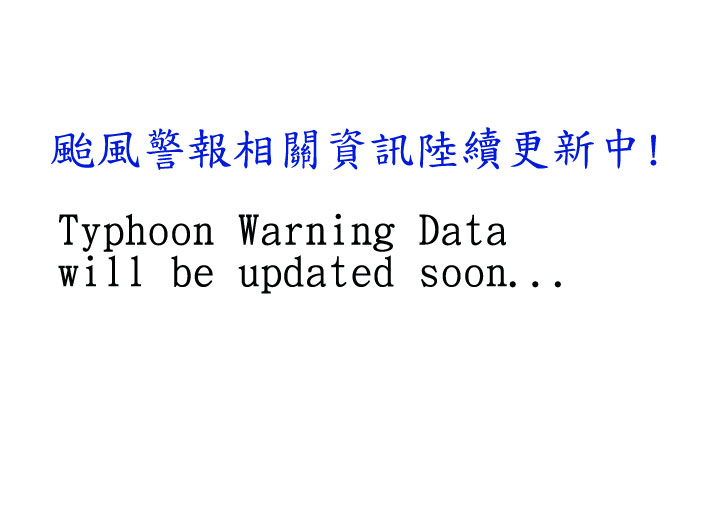
Taiwan Rainfall Forecast Next 48 Hours
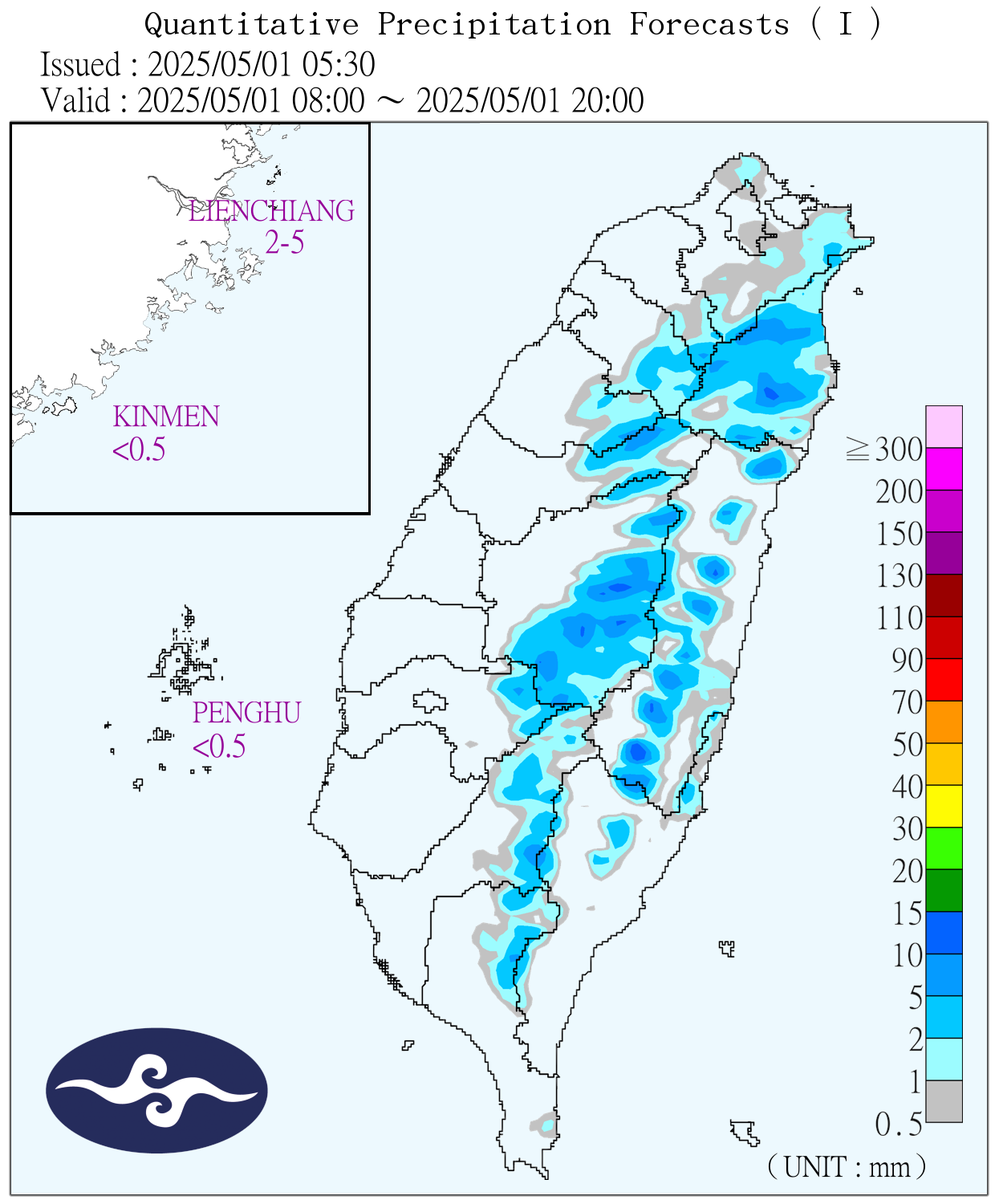
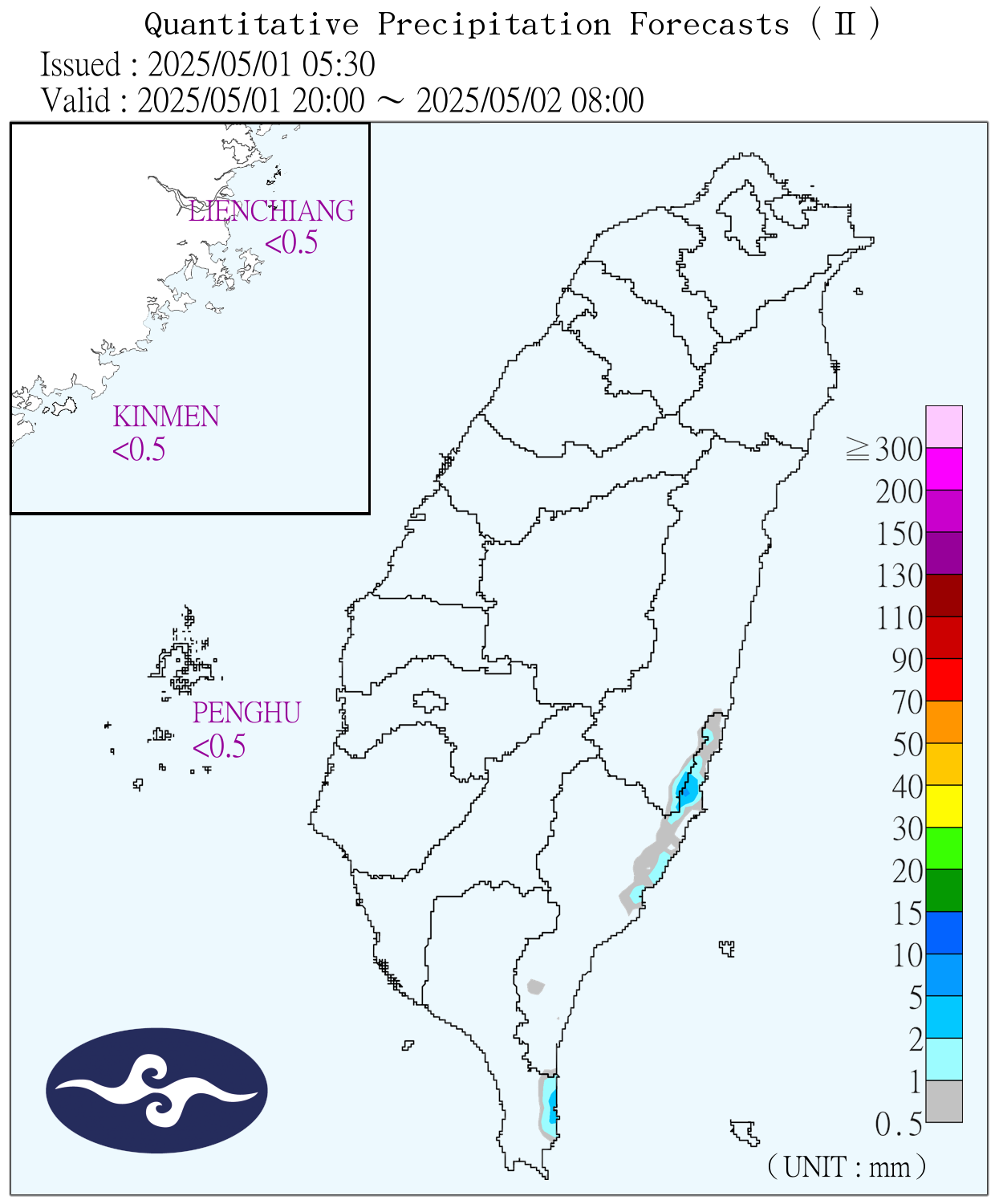
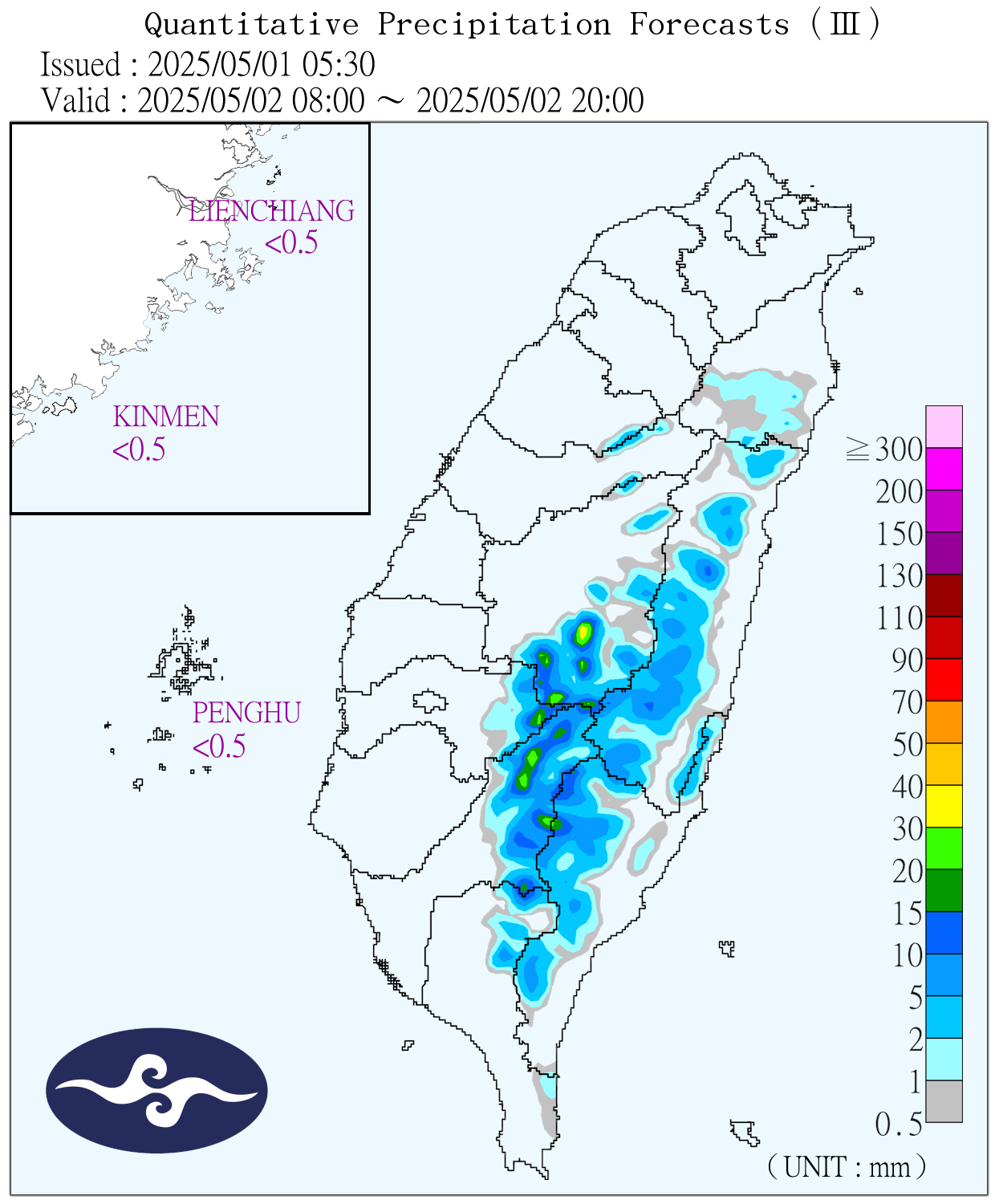
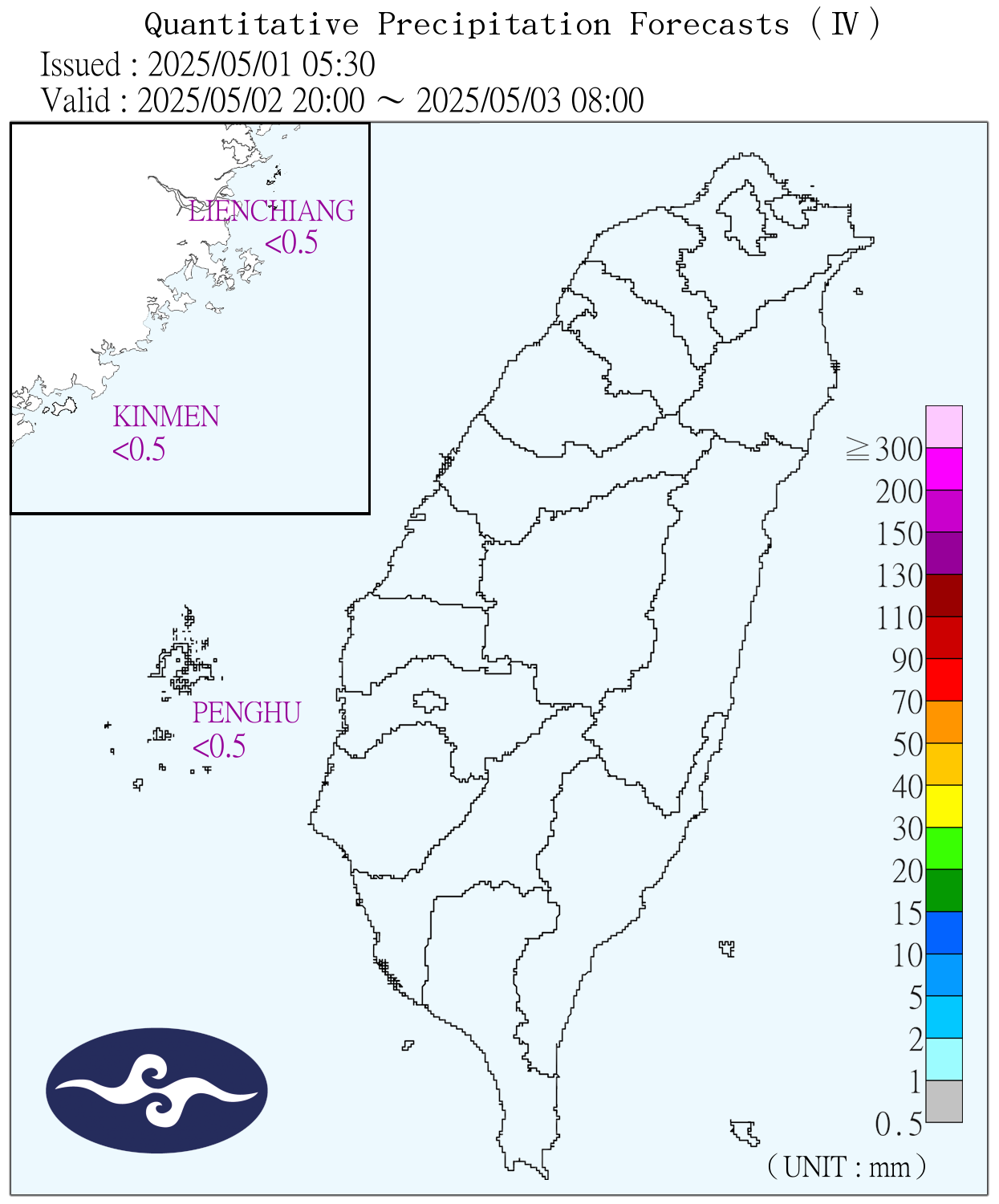
Taiwan Typhoon Statistics
During an average year a total of 26-27 tropical systems will develop. Four usually in the first 6 months of the year & the remaining 20+ during the last 6 months.
Typhoon Q & A
What things should one do to prepare for a typhoon?
- In the aftermath of many storms, the hardest hit areas can have their water mains shut down. This can last for several days. Having a 5 gallon bottle of water, or two, in a closet somewhere can make drinking, eating (and showering or using the toilet) a lot easier. It won't be any fun getting them, but if you are in an area apt to be hard hit, having them there will make you pretty happy if things go bad in terms of water in your neighborhood.
- Sea warnings are announced 24 in advance radius affecting shipping lanes. Land Warnings 18 hours in advance of the radius of the storm reaching land.
- After wind damage, the most common problem faced in Taiwan comes from flooding. If you are in an area that is likely to be hard hit and on a ground floor or in a basement structure, get yourself and your stuff to a second floor.
What does "maximum sustained wind" mean ?
The maximum sustained wind mentioned are the highest 1 min surface winds occurring within the circulation of the system. These "surface" winds are those observed (or, more often, estimated) to occur at the standard meteorological height of 10 m (33 ft) in an unobstructed exposure (i.e., not blocked by buildings or trees).
During a Typhoon/hurricane are you supposed to have the windows and doors on the storm side closed and the windows and doors on the lee side open?
NO! All of the doors and windows should be closed throughout the duration of the hurricane. The pressure differences between the inside of your house and the outside in the storm do not build up enough to cause your windows to blow out.
Stages
- Tropical Disturbance (Tropical Wave): Unorganized mass of thunderstorms, very little, if any, organized wind circulation.
- Tropical Depression: Has evidence of closed wind circulation around a center with sustained winds from 20-34 knots (23-39 mph), and the storm generally doesn't feel very good about itself.
- Tropical Storm: Maximum sustained winds are from 35-64 knots (40-74 mph). The storm is named once it reaches tropical storm strength.
The Taiwan weather service categorizes Tropical Storms as Category 1 Typhoons. (In Taiwan there are only 3 storm levels.) - Typhoon or Hurricane: Maximum sustained winds exceed 64 knots (74 mph). Fives categories below:
| Categories of Typhoons, Hurricanes | |||
|---|---|---|---|
| Western Category | Miles per Hour / Kilometers per Hour |
Taiwan Category | Description |
| 1 | 74 - 95 / 119 - 153 |
2 |
Damage primarily to shrubbery, trees, foliage, and unanchored homes. No real damage to other structures. Some damage to poorly constructed signs. Low-lying coastal roads inundated, minor pier damage, some small craft in exposed anchorage torn from moorings. |
| 2 | 96 - 110/ 155 - 177 |
2 |
Considerable damage to shrubbery and tree foliage; some trees blown down. Major damage to exposed mobile homes. Extensive damage to poorly constructed signs. Some damage to roofing materials of buildings; some window and door damage. No major damage to buildings. Coast roads and low-lying escape routes inland cut by rising water 2 to 4 hours before arrival of hurricane center. Considerable damage to piers. Marinas flooded. Small craft in unprotected anchorages torn from moorings. Evacuation of some shoreline residences and low-lying areas required. |
| 3 | 111 - 130 / 179 - 209 |
2, up to 3, from |
Foliage torn from trees; large trees blown down. Practically all poorly constructed signs blown down. Some damage to roofing materials of buildings; some wind and door damage. Some structural damage to small buildings. Mobile homes destroyed. Serious flooding at coast and many smaller structures near coast destroyed; larger structures near coast damaged by battering waves and floating debris. Low-lying escape routes inland cut by rising water 3 to 5 hours before hurricane center arrives. Flat terrain 5 feet or less above sea level flooded inland 8 miles or more. Evacuation of low- lying residences within several blocks of shoreline possibly required. |
| 4 | 131 - 155 / 211 - 249 |
3 |
Shrubs and trees blown down; all signs down. Extensive damage to roofing materials, windows and doors. Complete failures of roofs on many small residences. Complete destruction of mobile homes. Flat terrain 10 feet or less above sea level flooded inland as far as 6 miles. Major damage to lower floors of structures near shore due to flooding and battering by waves and floating debris. Low-lying escape routes inland cut by rising water 3 to 5 hours before hurricane center arrives. Major erosion of beaches. Massive evacuation of all residences within 500 yards of shore possibly required, and of single-story residences within 2 miles of shore. |
| 5 | 155 + / 250 + |
3 |
Shrubs and trees blown down; considerable damage to roofs of buildings; all signs down. Very severe and extensive damage to windows and doors. Complete failure of roofs on many residences and industrial buildings. Extensive shattering of glass in windows and doors. Some complete building failures. Small buildings overturned or blown away. Complete destruction of mobile homes. Major damage to lower floors of all structures less than 15 feet above sea level within 500 yards of shore. Low-lying escape routes inland cut by rising water 3 to 5 hours before hurricane center arrives. Massive evacuation of residential areas on low ground within 5 to 10 miles of shore possibly required. |




